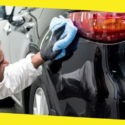7 Golden Tips For Driving Cars On Road
This post was last updated on May 13th, 2023

Driving is a useful lifelong skill that requires attention and practice to master. Whether driving a manual or automatic vehicle, competent driving depends on concentration, awareness of your surroundings, and applying key techniques.
Before getting behind the wheel, drivers must understand some fundamental concepts to drive safely and legally.
Contents
Toggle1. Follow The Speed Limit
Obeying the speed limit is essential for safe driving and reduces the likelihood of accidents, injuries, fines, and legal consequences. Speeding increases risks in numerous ways, including reduced reaction times, difficulty controlling the vehicle, and inability to stop quickly if needed. Drivers who exceed the speed limit put themselves and others in danger, and face serious penalties if caught. Contact Fort Collins car accident attorneys at Springer & Steinberg, P.C. if you get involved in an accident.
2. Adjust The Mirrors
While driving, your mirrors provide extra sets of eyes that supplement your peripheral vision and ensure safety. Vehicles have side mirrors on each door and a center mirror in front of the windshield, collectively allowing a wide field of view behind the vehicle without blind spots. These mirrors work together with your direct line of sight to give drivers a comprehensive awareness of their surroundings while cruising down the road.
3. Focus On The Road
Distracted driving puts lives at risk, so keep your full attention on the road while driving. Keep your hands on the wheel, your eyes on the road, and your mind focused on navigating safely. Avoid using mobile phones, adjusting controls, eating or drinking, conversing with passengers, or any other diversions that take your focus from the driving task.
These common distractions impair a driver’s awareness, reaction time, and decision-making—with deadly consequences.
4. Leave A Safe Distance Between Vehicles
Maintain a safe distance between you and other vehicles. The more distance you keep, the more time you will have to react in an emergency braking situation. A good rule of thumb is to keep at least a 3 to 4 seconds gap between you and the car ahead of you. Increase your following distance if you are traveling at higher speeds.
5. Observe Traffic Lights And Signs
Pay attention to all traffic signs, signals, and road markings. They provide guidance and warnings to help keep you and others safe. Running red lights or stop signs can be extremely hazardous. Likewise, ignoring yield signs, one-way signs and lane markings can lead to dangerous situations. Obeying traffic signs and signals should be second nature.
6. Use Your Signals
Using turn signals properly helps communicate your intentions to other drivers. Always signal before changing lanes or making a turn. Signal well in advance to give ample warning to vehicles around you. Once you have completed your lane change or turn, turn your signal off. Signaling makes driving safer for you and others on the road.
7. Do Not Ride The Clutch
The clutch connects and disconnects the engine’s power to the transmission and wheels, allowing you to control the vehicle’s speed through gear changes. Whenever the engine is running, it spins the wheels and propels the vehicle. The clutch pedal disengages this power flow so you can shift into a different gear. Releasing the clutch pedal re-engages power to accelerate in the new gear.
Proper clutch usage is essential to avoid damage and ensure safe driving. The most common mistake drivers make is “riding” the clutch by resting their foot on the pedal, which causes excessive wear and can damage the clutch plate, transmission, and other components. For optimal clutch life and performance, you must keep your foot off the clutch pedal when not actively shifting gears.
Recommended For You
Reasons to Choose an SUV over a Sedan
Most Inside
Most Inside offers high-quality recommendations and valuable updates to enhance all aspects of your life, providing premium guidance and enriching experiences.




